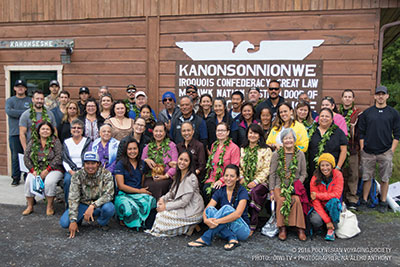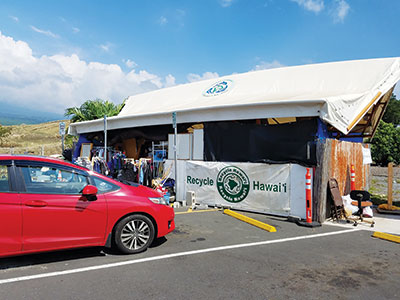Worldwide Voyage
Leg 23 brought Hōkūle‘a to Sorel, Quebec, Canada—the furthest north that she will travel on the Worldwide Voyage.
As Hōkūle‘a navigated through the most extensive and complex lock system of her voyage, she has traveled through an incredible 61 locks.
 Varying in heights and sizes, a lock is a sophisticated waterway system used for raising and lowering watercraft between bodies of water of different levels on rivers and waterways. Hōkūle‘a and her crew have gone through rising levels of up to 420 feet and back down as she continued on her journey.
Varying in heights and sizes, a lock is a sophisticated waterway system used for raising and lowering watercraft between bodies of water of different levels on rivers and waterways. Hōkūle‘a and her crew have gone through rising levels of up to 420 feet and back down as she continued on her journey.
“The most memorable locks were Lock 17 of the Erie Canal and the Chambly Locks. With Hōkūle‘a at 19.5 feet wide and the locks being the widest at 21 feet, left us with less than a foot of clearance on either side,” says Kalepa Baybayan, captain of Hōkūle‘aʻs Leg 23 of the Worldwide Voyage. “We entered and exited with a lot of control and without incident. I’m extremely proud of the Leg 23 Crew for meeting that challenge,” Kalepa praised.
Hōkūle‘a traveled through the fresh water systems of the Erie Canal, Lake Ontario, St. Lawrence River and through Canadian Canals and Lock System.
Sept. 3—“The mission was to prove that it is possible to sail the ocean with a Viking ship. We knew that before, because we got findings from [Viking explorer] Leif Eriksson around year 1000 in North America, many years before Christopher Columbus found India,” said Captain Bjorn Ahlander of the Draken Harald Harfagre as he described the start of his crew’s journey.
“The mission was to prove that it was possible to go the historic voyage from Norway to Iceland, Iceland to Greenland, Greenland to Newfoundland, and we did it,” Bjorn stated.

“A lot of people do not move far from where they come from, and I think that’s a pity because people all over the world are different, we can learn so much from each other,” said Erik Rolfmoller, deckhand for the Draken Harald Harfagre. “The exploration and the development you go through personally when you go exploring is very important,” Erik added.
Named after Harald Harfagre, the king who unified Norway into one kingdom, the dragon ship was constructed in the town of Haugesund in Western Norway in March 2010.
Crafted from oak, itʻs a 114 feet long, 80-ton ship with a 3,200 square foot sail.
Sept. 14—Passing through the 34th lock to get to the upper Montreal area of the St. Lawrence river, Hōkūle‘a docked at her first marina within a Native Reserve—the Mohawk Territory of Kahnawake, Quebec, Canada.
The Mohawk community is home to the immersion program whose leaders helped pave the way for Hawai‘i’s immersion program in the early ʻ80s. Dorothy Lazore was instrumental in establishing the Mohawk language immersion program in Kahnawake and spoke before Hawai‘i’s Board of Education on the day that Hawai‘i DOE’s immersion program was approved—a program that has become a model nationally and internationally.
This gathering was yet another opportunity along the Worldwide Voyage to honor the collaborative work being done in native communities to keep indigenous knowledge alive and relevant to the world around us.
Additionally, the crew of Hōkūle‘a, the founding members of Aha Punana Leo—a Native Hawaiian nonprofit dedicated to revitalizing the Hawaiian language for future generations in Hawai‘i, and the Mohawk community hope to inspire and perpetuate native knowledge and language for generations to come.
“As you were telling us just how we helped you and how we were an inspiration for your people, and how our teachers went out to help you to revitalize what could have been lost in one generation or in two,” said Kanentokon Hemlock, Bear Clan Chief of the Kanonsonnionwe Long House. “It’s interesting because you inspire us. We look to you. We follow your inspiration too in all the work you have been doing in your land.”


